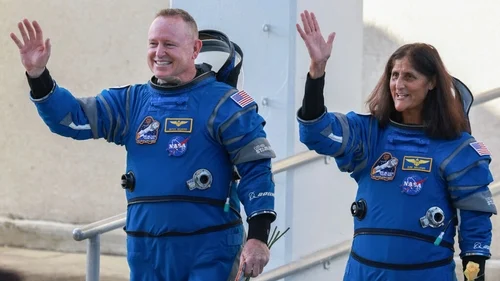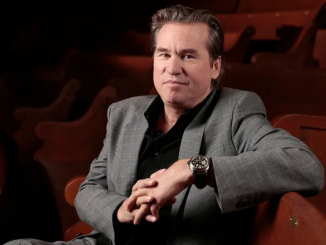NASA Astronauts Return Home After Unexpected Nine-Month Stay in Space
A Triumphant Return to Earth
NASA astronauts Butch Wilmore and Suni Williams have finally returned to Earth after an extended and unexpected nine-month stay aboard the International Space Station (ISS). Their journey home concluded on Tuesday as their SpaceX capsule safely splashed down in the Gulf of Mexico, marking the end of a mission that was initially supposed to last only a few weeks.

A Rocky Start: Boeing’s Starliner Test Flight Issues
The saga began in June 2024 when Wilmore and Williams launched aboard Boeing’s new Starliner capsule for what was meant to be a short test flight. However, technical failures with the spacecraft forced NASA to abandon its return trip, leaving the astronauts stranded aboard the ISS far longer than expected. As a result, NASA opted to bring them back via SpaceX’s Crew Dragon capsule, pushing their return into early 2025.
The Longest Short Mission
Originally scheduled for just over a week, Wilmore and Williams ended up spending a staggering 286 days in space. Over this time, they orbited Earth 4,576 times and covered a distance of 121 million miles (195 million kilometers). Despite the uncertainty surrounding their return, the astronauts maintained their composure, seamlessly integrating into the ISS crew and contributing to scientific experiments, repairs, and even spacewalks.

The Final Leg: SpaceX to the Rescue
With their relief crew finally arriving, NASA decided to expedite Wilmore and Williams’ departure to avoid worsening weather conditions. The astronauts boarded SpaceX’s Crew Dragon capsule, which had initially been scheduled for a later mission but was repurposed to bring them home. After undocking from the ISS, their journey back to Earth lasted just a few hours before their capsule made a successful splashdown off the coast of Tallahassee, Florida.
A Warm Welcome Home
Within an hour of landing, recovery teams reached the capsule, where dolphins playfully circled the spacecraft as divers worked to secure it. The hatch was soon opened, and the astronauts emerged with smiles and waves, assisted into reclined stretchers for routine medical evaluations. Wilmore flashed two thumbs up, signifying relief and triumph after such an extended mission.

Becoming Household Names
The prolonged mission and uncertainty surrounding their return captivated audiences worldwide, turning “Butch and Suni” into household names. Their resilience and adaptability not only exemplified the dedication of NASA astronauts but also underscored the risks and unpredictability of space exploration.
Historic Achievements in Space
During their extended stay, Wilmore and Williams transitioned from temporary guests to core members of the ISS crew. Williams, in particular, set a new record for female astronauts by accumulating 62 hours over nine spacewalks throughout her career. Her leadership also shined as she assumed command of the space station three months into their extended mission.
A Political Twist to the Journey
The astronauts’ delayed return even caught the attention of political figures. In January, former President Donald Trump urged SpaceX’s Elon Musk to speed up their return, blaming the delay on the Biden administration. NASA, however, had already been considering alternative solutions, and the accelerated plan was eventually implemented using a previously flown SpaceX capsule.
The Future of Space Travel
NASA’s partnership with both SpaceX and Boeing was intended to provide redundancy in astronaut transportation following the retirement of the Space Shuttle. However, the technical challenges faced by Boeing’s Starliner have led to increased reliance on SpaceX. NASA is now evaluating whether Boeing’s next crewed flight should be delayed further or if additional uncrewed cargo tests are necessary before resuming astronaut missions.

A Mission to Remember
Despite the challenges, Wilmore and Williams demonstrated extraordinary professionalism and adaptability, proving once again the resilience of NASA astronauts. As they undergo debriefing and recovery on Earth, their journey will remain a testament to both the triumphs and uncertainties of human spaceflight.
Looking Ahead: What’s Next for Starliner?
Following the complications with Starliner, Boeing is under increased pressure to ensure the spacecraft meets NASA’s rigorous safety standards before carrying astronauts again. NASA has indicated that further uncrewed test flights may be required before approving another crewed Starliner mission. Meanwhile, SpaceX’s Crew Dragon continues to be the primary transport vehicle for NASA astronauts traveling to and from the ISS. The successful return of Wilmore and Williams reaffirms the importance of maintaining multiple options for space travel, ensuring the long-term success of human missions beyond Earth’s orbit.


